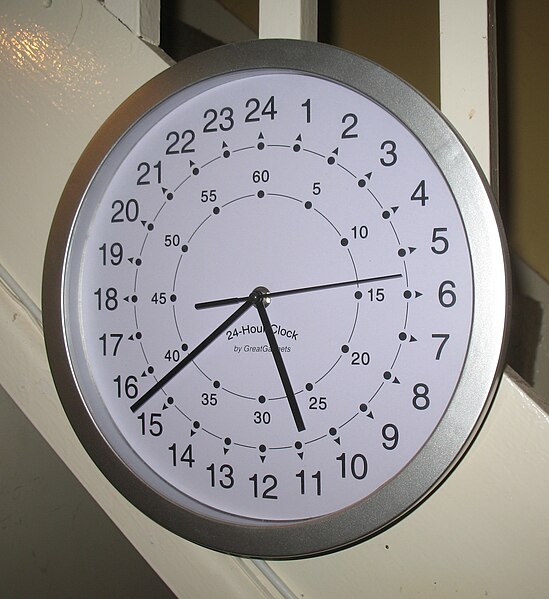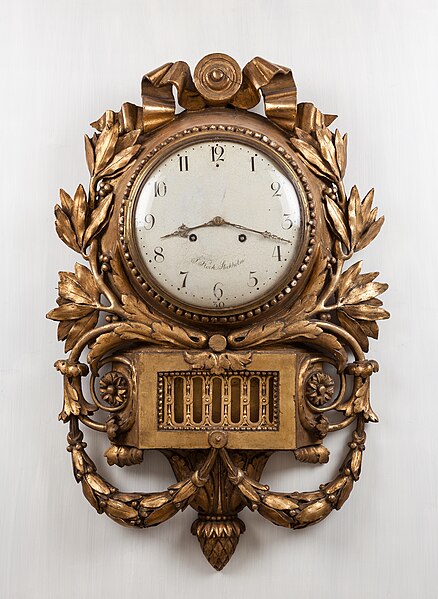A clock face is the part of an analog clock that displays time through the use of a flat dial with reference marks, and revolving pointers turning on concentric shafts at the center, called hands. In its most basic, globally recognized form, the periphery of the dial is numbered 1 through 12 indicating the hours in a 12-hour cycle, and a short hour hand makes two revolutions in a day. A long minute hand makes one revolution every hour. The face may also include a second hand, which makes one revolution per minute. The term is less commonly used for the time display on digital clocks and watches.
A wall clock showing the time at 10:09
15th-century rotating dial clock face, St. Mary's Church, Gdańsk, Poland
French decimal clock (with the 24 standard hours included around the outside)
A modern quartz clock with a 24-hour face
A clock or chronometer is a device that measures and displays time. The clock is one of the oldest human inventions, meeting the need to measure intervals of time shorter than the natural units such as the day, the lunar month, and the year. Devices operating on several physical processes have been used over the millennia.
An analog pendulum clock made around 18th century
Casio F-91W digital watch, one of the most popular watches ever
Simple horizontal sundial
The flow of sand in an hourglass can be used to keep track of elapsed time.








